Simple Steps to Improving Your Drawing Skills
Have you ever looked at a beautiful piece of art and thought, "I wish I could create something like that"? Well, you're not alone! Many aspiring artists feel the same way, and the good news is that you can absolutely enhance your drawing abilities with some simple yet effective steps. Whether you're just picking up a pencil for the first time or you're an experienced artist looking to refine your skills, this article will guide you through practical techniques and strategies that can elevate your artistry to new heights.
Before diving into complex techniques, it's essential to grasp the fundamental concepts that serve as the backbone of drawing. Think of these basics as the building blocks of your artistic journey. You might wonder, what are these basics? Well, they include lines, shapes, and forms. Mastering these elements will enable you to create more intricate and detailed works. For instance, consider how a simple line can convey movement or emotion. By understanding how to manipulate these basic forms, you'll find that your ability to express ideas visually will improve dramatically.
Consistency is key in developing drawing skills. Just like any other skill, drawing requires practice to hone your technique and build confidence. Think of it as training for a sport; the more you practice, the better you become. Establishing a regular practice routine is crucial. Aim for at least 30 minutes a day dedicated to drawing. This doesn't have to be daunting; you can sketch anything that inspires you, from your morning coffee to the view outside your window. Over time, you'll notice significant improvements in your skills, and your confidence will soar.
One of the most exciting aspects of drawing is the variety of mediums available. Don't limit yourself to just one type; explore different materials like pencils, charcoal, ink, and even digital tools. Each medium offers unique qualities and challenges that can enhance your creativity. For example, charcoal can produce rich, deep blacks and soft shading, while ink can create sharp, defined lines. By experimenting with various mediums, you'll discover what resonates with you and expand your artistic range.
If you want your drawings to come to life, a solid understanding of human and animal anatomy is essential. This knowledge allows you to create more realistic representations and understand how the body moves. Start by studying proportions and muscle structures, which can be likened to understanding the mechanics of a car before you can drive it. Consider using anatomical reference books or online resources to guide your studies. The more you learn about anatomy, the more lifelike your drawings will become.
Perspective is a powerful tool in drawing that can create depth and dimension in your artwork. Imagine standing on a busy street; the buildings seem to converge as they recede into the distance. This is the magic of perspective! Understanding one-point and two-point perspective can dramatically improve your ability to create dynamic compositions. You can practice this by drawing simple shapes in perspective, gradually incorporating more complex scenes as you gain confidence.
Reference images can be your best friend when it comes to improving accuracy in drawing. Whether you're drawing from photographs or real-life objects, references help you understand shapes, shadows, and proportions better. When using reference images, try to analyze them critically. Ask yourself questions like, "What shapes do I see?" or "How does light affect the subject?" This analytical approach will sharpen your observational skills and make your drawings more precise.
Constructive criticism is vital for growth as an artist. Don't be afraid to share your work with peers, mentors, or online communities. Feedback can provide invaluable insights that you may not see on your own. When receiving criticism, keep an open mind and consider how you can incorporate the suggestions into your practice. Remember, every piece of feedback is a stepping stone toward becoming a better artist.
As you progress in your drawing journey, it's important to develop a unique artistic voice. Think of your personal style as your signature – it's what sets you apart from other artists. Explore different genres, techniques, and influences to discover what resonates with you. Experimentation is key; don’t be afraid to mix styles or create something entirely new. Over time, you'll cultivate a style that feels authentic and true to you.
Establishing clear, achievable goals can be a powerful motivator in your artistic journey. Consider setting both short-term and long-term objectives. For example, a short-term goal might be to complete a drawing every week, while a long-term goal could be to participate in an art exhibition. By tracking your progress and celebrating small victories, you'll stay focused and inspired to continue improving your skills.
- How often should I practice drawing? Aim for at least 30 minutes a day to see consistent improvement.
- What medium is best for beginners? Pencils are a great starting point due to their versatility and ease of use.
- How can I find my personal style? Experiment with different techniques and subjects until you find what feels right for you.
- Is it important to study anatomy? Yes, understanding anatomy can greatly enhance the realism of your drawings.
- How do I handle criticism of my work? Embrace feedback as a tool for growth and improvement.
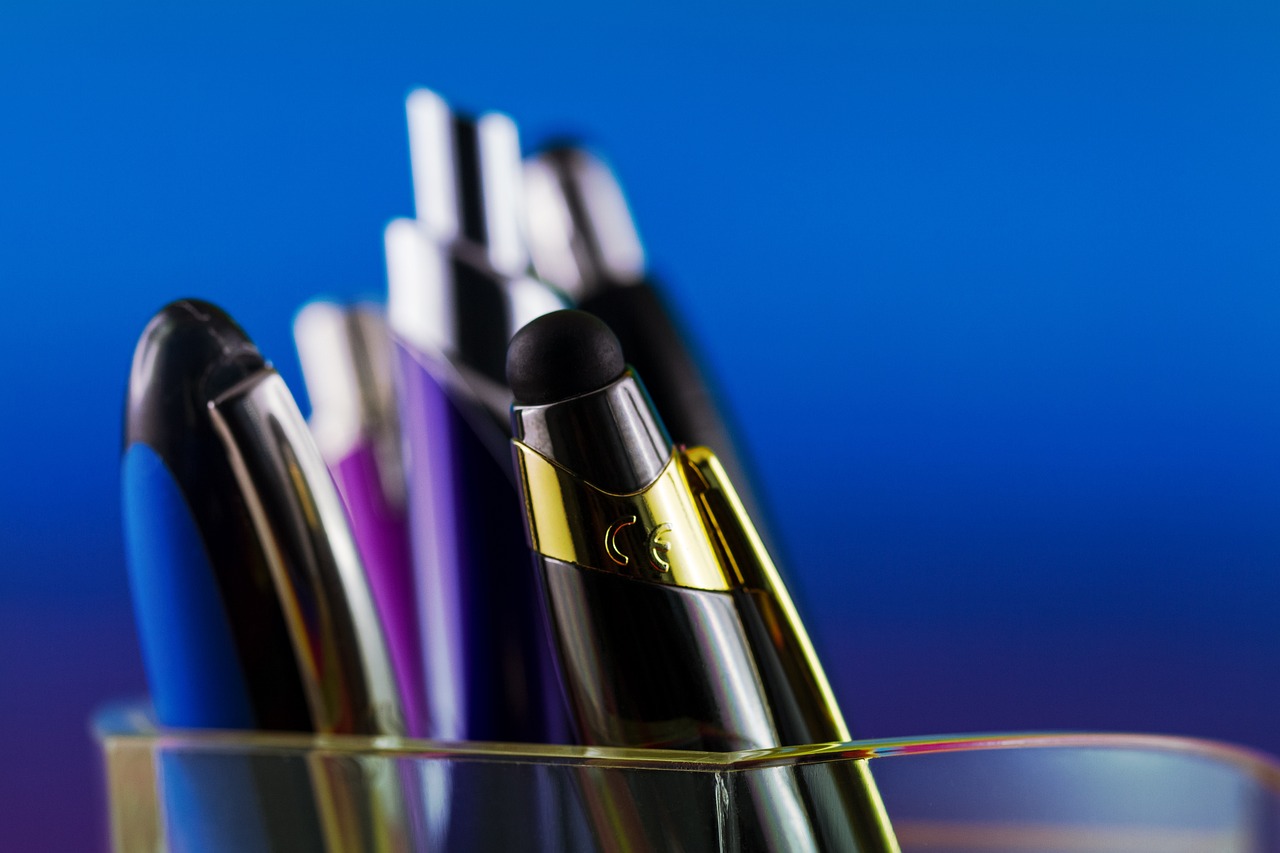
Understanding the Basics
When it comes to drawing, is like laying the foundation of a house. Without a solid base, everything you build on top can collapse. The fundamental concepts of lines, shapes, and forms are essential for any artist, whether you're just starting out or looking to refine your existing skills. Think of these elements as the building blocks of your artistic journey; they are the tools you will use to create your masterpiece.
First, let’s talk about lines. Lines can be straight, curved, thick, or thin, and they play a crucial role in defining shapes and forms. They can convey emotions—think of jagged lines representing chaos or smooth lines suggesting calmness. When you practice drawing lines, you're not just getting comfortable with your pencil; you're learning how to express feelings and ideas visually. Try drawing various lines in different styles and see how they change the mood of your work.
Next up are shapes. Shapes are created when lines enclose a space. They can be geometric, like squares and circles, or organic, resembling the free-form shapes found in nature. Understanding how to manipulate shapes is vital; they can help you create depth and interest in your drawings. For instance, consider how a simple circle can transform into a sphere by adding shading and highlights. This brings us to the importance of forms, which are three-dimensional shapes that add volume and realism to your art.
To truly grasp these concepts, it’s beneficial to practice drawing basic shapes and forms. Start with simple objects around you—like a cup or a fruit. Break them down into basic shapes and sketch them out. This process will train your eye to see the world as an artist does. Here’s a simple exercise:
| Object | Basic Shapes |
|---|---|
| Apple | Circle |
| Cup | Cylinder |
| Book | Rectangle |
By identifying the basic shapes in everyday objects, you will enhance your ability to draw more complex forms in the future. Remember, every great artist started with these simple principles. So, don't rush the learning process; take your time to master the basics, and you’ll find that your confidence and skills will grow exponentially.
In conclusion, understanding the basics of drawing isn't just about knowing how to create lines, shapes, and forms; it's about developing a visual language that allows you to express your thoughts and emotions. As you continue your artistic journey, keep these fundamentals in mind, and don't hesitate to revisit them whenever you feel stuck. They are your trusty companions in the world of art.

Practicing Regularly
When it comes to improving your drawing skills, one of the most crucial elements is practicing regularly. Think of your skills as a muscle; the more you work it out, the stronger it gets. Just like a runner trains every day to build endurance, you too need to dedicate time to draw consistently. This doesn’t mean you have to spend hours each day; even 15 to 30 minutes can make a significant difference!
So, how do you establish a routine that sticks? First, consider setting aside a specific time each day for your drawing practice. You might be a morning person who enjoys sketching with a cup of coffee or an evening artist who finds inspiration in the quiet of the night. Whatever your preference, consistency is the name of the game. You could even use a calendar to mark your daily practice sessions, creating a visual representation of your commitment.
Another effective strategy is to incorporate variety into your practice sessions. Instead of drawing the same subject repeatedly, mix it up! Here are some ideas to keep your practice fresh and exciting:
- Draw from life: Set up a still life with objects around your home.
- Sketch from photos: Use reference images to practice different subjects.
- Try timed sketches: Set a timer for 5 or 10 minutes to quickly capture your subject.
- Experiment with different styles: Try drawing in a cartoonish style one day and realistic the next.
Moreover, it’s important to track your progress. Keep a sketchbook where you can jot down your thoughts and reflect on your improvement over time. You might even want to create a progress chart to visualize your growth. Seeing how far you’ve come can be incredibly motivating and can help you stay focused on your goals.
Don’t forget to celebrate your small victories! Every time you complete a drawing or learn a new technique, take a moment to appreciate your hard work. This positive reinforcement can keep your enthusiasm high and encourage you to continue practicing.
In conclusion, making drawing a regular part of your life is essential for improvement. By setting aside consistent time for practice, incorporating variety, tracking your progress, and celebrating your achievements, you will find that your skills will grow exponentially. Remember, the journey of an artist is a marathon, not a sprint—so enjoy every step along the way!
Q: How often should I practice drawing?
A: Ideally, aim for daily practice, even if it’s just for a short period. Consistency is key!
Q: What should I focus on during practice?
A: Focus on a mix of techniques, subjects, and styles to keep your practice engaging and well-rounded.
Q: How can I stay motivated to practice?
A: Set achievable goals, track your progress, and celebrate your successes to maintain motivation.

Exploring Different Mediums
When it comes to drawing, one of the most exciting aspects is the variety of mediums available to artists. Each medium has its own unique characteristics and can evoke different emotions and effects in your artwork. Think of it like choosing the right tool for a job; the medium you select can completely transform your artistic expression. Whether you're a beginner just starting out or an experienced artist looking to expand your repertoire, exploring different mediums is a fantastic way to enhance your skills and discover new techniques.
Let’s dive into some popular drawing mediums and what makes them special:
- Pencils: Often the first medium that comes to mind, pencils are incredibly versatile. They allow for a range of values, from soft, light strokes to dark, bold lines. Plus, they’re great for detailed work and shading. The beauty of pencils lies in their accessibility; whether you’re sketching in a notebook or creating intricate designs, they’re always handy.
- Charcoal: If you want to create dramatic contrasts and rich textures, charcoal is your go-to medium. It can be messy, but that’s part of its charm! Charcoal allows for expressive strokes and deep blacks that can add depth to your drawings. Just remember to fix your work with a spray to prevent smudging!
- Ink: Ink drawing offers a bold and graphic quality that can make your artwork pop. Whether you’re using pens or brushes, ink can create sharp lines and fluid shapes. It’s perfect for those who enjoy a more permanent medium, and the results can be striking.
- Digital Tools: In today’s tech-savvy world, digital drawing has become increasingly popular. Using software like Adobe Illustrator or Procreate, artists can create stunning illustrations with endless possibilities. The ability to easily undo mistakes and experiment with colors and layers makes digital drawing an appealing option for many.
Exploring these different mediums can not only improve your technical skills but also help you find your personal style. Imagine trying out charcoal for the first time and realizing how much you love the texture it creates, or discovering that digital tools allow you to experiment freely without the fear of wasting materials. Each medium offers a unique experience and can unlock new creative pathways.
Moreover, consider combining mediums for even more dynamic results. For example, you can start with a pencil sketch, then add depth with charcoal, and finish off with ink outlines. This mixed-media approach can lead to unexpected and exciting outcomes, pushing your artistic boundaries further.
In conclusion, don't hesitate to experiment with different drawing mediums. Each one has its own personality and can inspire you in ways you might not expect. So grab your sketchbook, gather some supplies, and let your creativity flow!
Q: What is the best medium for beginners?
A: Pencils are often recommended for beginners due to their versatility and ease of use. They allow you to practice shading and line work without the pressure of permanence.
Q: Can I mix different mediums in one drawing?
A: Absolutely! Mixing mediums can enhance your artwork and allow for creative experimentation. Just be mindful of how different materials interact with each other.
Q: How do I choose the right medium for my style?
A: Try out various mediums and see which ones resonate with you. Pay attention to how each medium feels in your hands and the effects you can achieve. Your personal style will emerge as you explore!
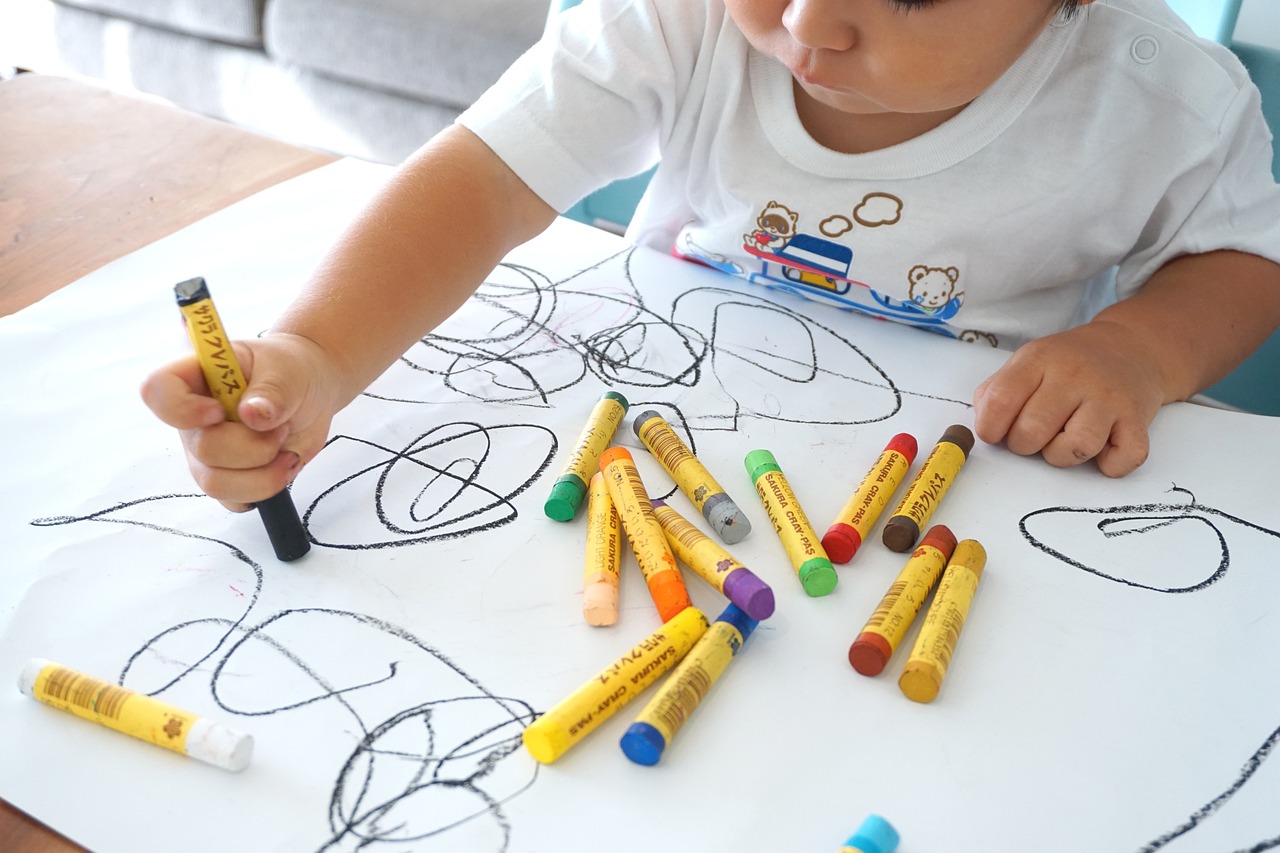
Studying Anatomy
When it comes to drawing, understanding anatomy is like having the secret key to unlock a treasure chest of artistic possibilities. Whether you're sketching a human figure or an animal, knowing the underlying structures can transform your work from basic outlines to stunning representations that breathe life into your creations. But why is anatomy so crucial? Well, think of it this way: if you want to build a house, you need to know how to lay a solid foundation. Similarly, a strong grasp of anatomy provides the framework for your artistic endeavors.
To get started, it's essential to focus on the major components of anatomy that will enhance your drawing skills. This includes understanding proportions, muscle groups, and skeletal structure. For instance, the human body can be broken down into basic shapes—cylinders for arms and legs, spheres for joints, and boxes for the torso. By simplifying complex forms into these basic shapes, you can create more accurate and dynamic figures. This method not only aids in proportion but also in movement, allowing you to depict action and emotion in your drawings.
Here’s a quick overview of key anatomical concepts to consider:
| Anatomical Element | Description |
|---|---|
| Proportions | The relationship between the size of different body parts; for example, the average adult human is about 7.5 heads tall. |
| Muscle Groups | Understanding how muscles work and where they are located helps in depicting movement and tension. |
| Skeletal Structure | Knowing the bones and their connections informs how joints move and how to draw them accurately. |
Moreover, studying anatomy isn't just about memorizing names and locations; it's about observing how these elements interact in real life. Take the time to observe people and animals around you. Notice how their muscles flex and relax, how their joints articulate, and how their bodies move through space. This observational practice is invaluable. You might even consider setting up a drawing session with a live model or visiting a zoo to sketch animals in motion. These experiences can dramatically improve your understanding of anatomy and enhance your drawing skills.
Additionally, there are numerous resources available to help you on your anatomical journey. From anatomy books and online courses to drawing apps that provide 3D models, the tools at your disposal are vast. Here are a few recommendations:
- Books: "Anatomy for Artists" by Eliot Goldfinger is a classic.
- Online Courses: Websites like Skillshare and Udemy offer great courses on figure drawing and anatomy.
- Apps: Proko and Anatomy 360 provide interactive 3D models that you can manipulate and study.
In conclusion, taking the time to study anatomy will not only improve your technical skills but also deepen your appreciation for the complexity of the human and animal forms. Remember, every great artist started somewhere, and with consistent practice and a keen eye for detail, you too can elevate your drawing abilities to new heights. So grab that sketchbook and start exploring the fascinating world of anatomy!
Q: Do I need to be an expert in anatomy to draw well?
A: Not at all! You don't need to be a medical expert. A basic understanding of anatomy will significantly enhance your drawings, but practice is key.
Q: How can I practice anatomy effectively?
A: Regularly sketch from life or use reference images. Consider studying anatomy books and taking courses for structured learning.
Q: What are some common mistakes to avoid when studying anatomy?
A: One common mistake is focusing solely on memorization without applying what you learn in your drawings. Always practice drawing the concepts you study!
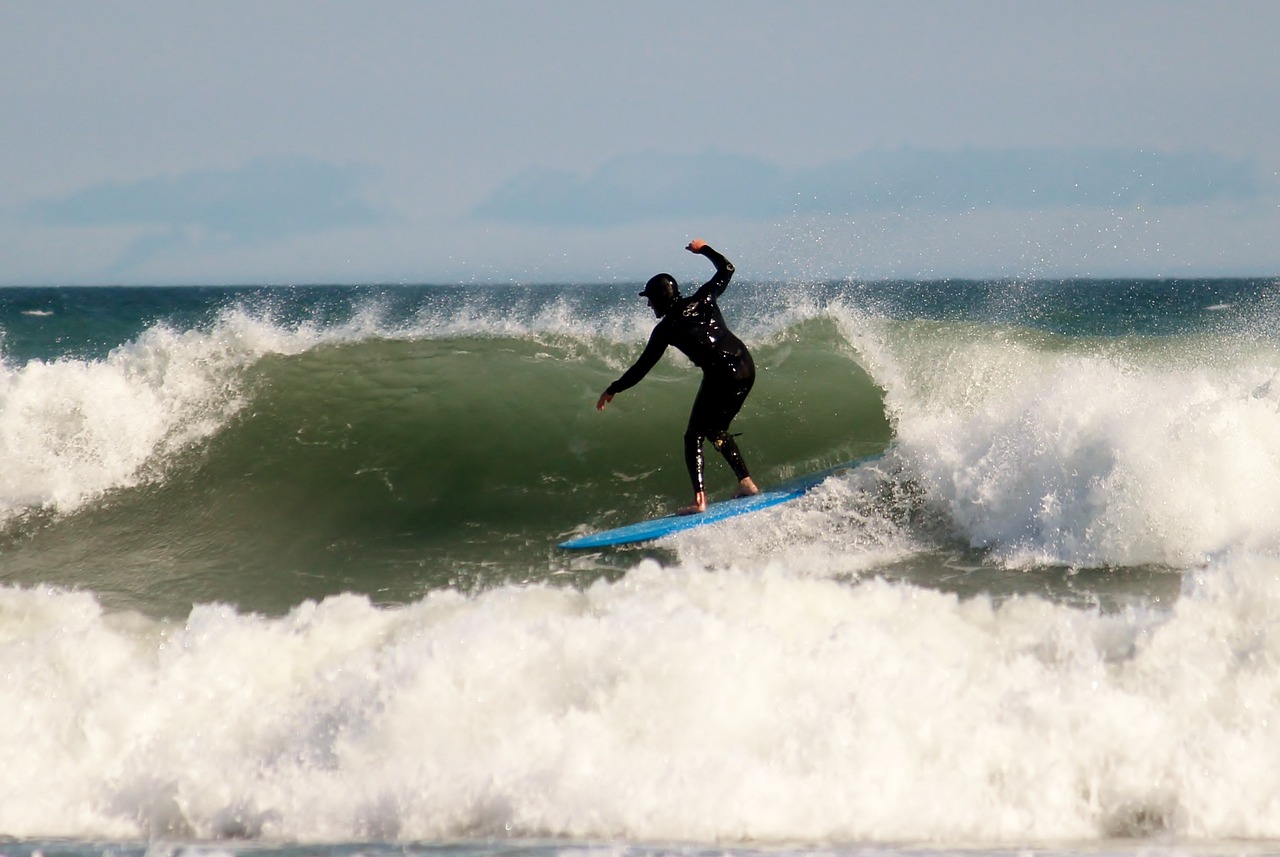
Mastering Perspective
When it comes to drawing, perspective is like the secret sauce that adds depth and realism to your work. Imagine standing on a street corner, looking down a long road that seems to vanish into the horizon. That feeling of distance and dimension is what perspective captures in your drawings. Mastering perspective can transform a flat image into a vibrant, lifelike scene that draws the viewer in. But how do you achieve this magical effect? Let’s break it down!
At its core, perspective is all about how objects appear smaller as they get farther away from the viewer. This principle is rooted in geometry, and understanding it can significantly enhance your artistic skills. There are primarily two types of perspective you'll want to get familiar with: one-point perspective and two-point perspective.
In one-point perspective, all lines converge at a single point on the horizon, known as the vanishing point. This technique is often used for drawing roads, railways, or any scene where you want to create a sense of depth along a straight line. Picture a long hallway or a railway track stretching into the distance; the sides of the hallway or the rails will seem to come together at the horizon, creating that captivating depth.
On the other hand, two-point perspective involves two vanishing points, usually placed on the horizon line. This method is fantastic for drawing buildings or any object that has an angle. Imagine standing at the corner of a street, looking at two buildings. Each building will have its own vanishing point, and understanding how to position these points correctly will allow you to create dynamic and realistic structures.
To help visualize these concepts, here’s a simple table that outlines the differences between one-point and two-point perspective:
| Perspective Type | Characteristics | Best Used For |
|---|---|---|
| One-Point Perspective | All lines converge at a single vanishing point | Roads, hallways, railway tracks |
| Two-Point Perspective | Lines converge at two vanishing points on the horizon | Buildings, corners of streets, complex shapes |
Now, while mastering these techniques, don’t forget about the importance of horizon lines. This is the imaginary line where the sky meets the ground, and it plays a crucial role in establishing the viewer's eye level. The height of your horizon line will drastically change the perspective of your drawing, so it’s essential to decide this early on in your sketching process.
Another tip to keep in mind is to practice drawing simple shapes in perspective. Start with boxes or cubes, and gradually move on to more complex forms. This exercise will help you understand how perspective affects different objects. Remember, practice makes perfect!
Lastly, don’t shy away from using reference images. Observing how perspective works in real life can be incredibly beneficial. Take photos of streets, buildings, or any scene that interests you, and study how the lines converge. By doing this, you’ll develop a keen eye for perspective, which will elevate your drawing skills.
- What is the best way to practice perspective drawing?
Start with simple shapes and gradually incorporate more complex structures. Use one-point and two-point perspective exercises to build your skills. - How can I tell if my perspective is correct?
Check if the lines of your objects converge at the correct vanishing points and ensure your horizon line is at the appropriate height for the scene. - Are there any tools that can help with perspective drawing?
Yes! Rulers, perspective grids, and digital tools can assist in achieving accurate perspective in your drawings.
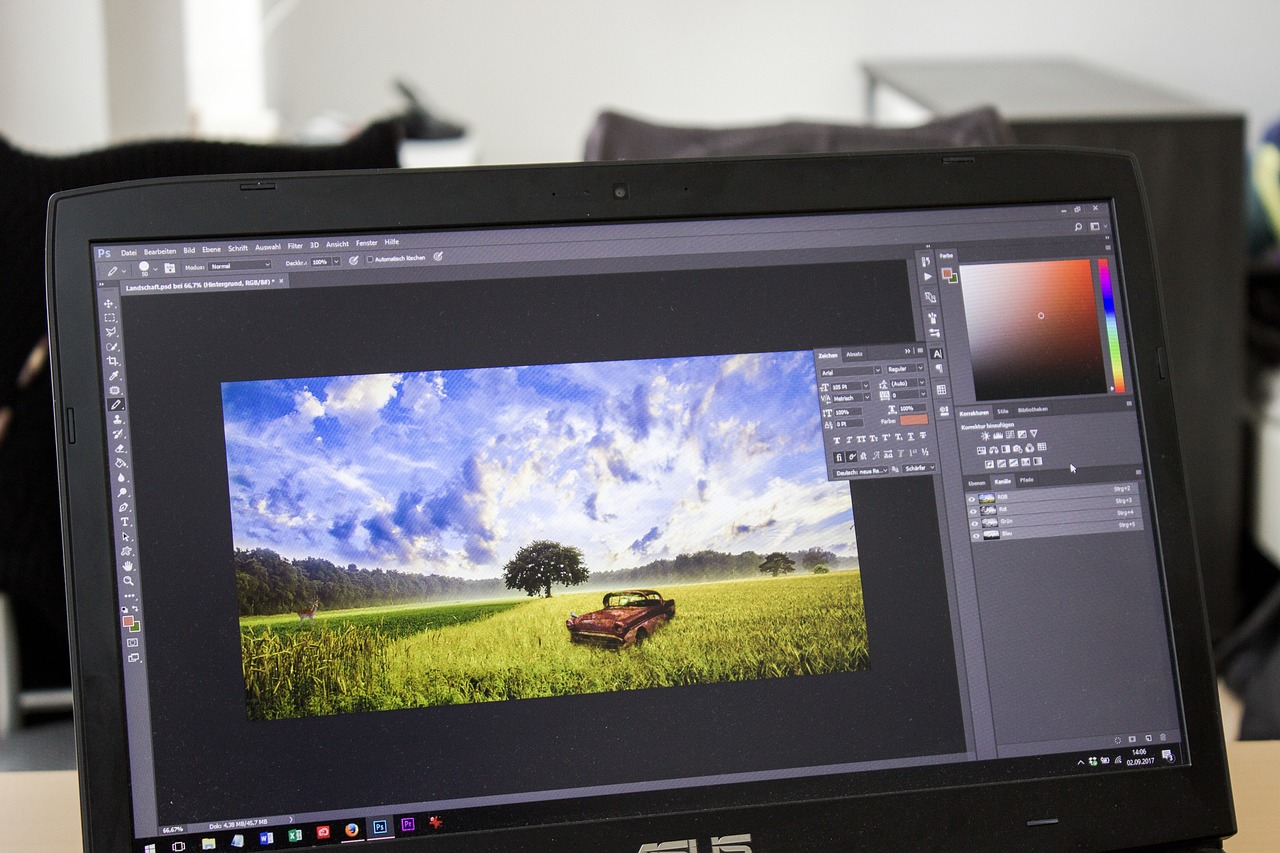
Utilizing Reference Images
When it comes to drawing, utilizing reference images is like having a trusty map in an uncharted territory. It guides you, helps you navigate through the complexities of form, light, and shadow, and ultimately leads you to create artwork that resonates with authenticity and precision. Reference images can come from a variety of sources, including photos, real-life objects, or even digital images found online. The key is to choose references that inspire you and align with what you want to achieve in your artwork.
One of the most significant advantages of using reference images is that they enhance your understanding of proportions and perspectives. For instance, if you're drawing a human figure, observing a photograph can help you grasp the intricate details of anatomy that might be challenging to visualize from memory alone. This practice not only boosts your accuracy but also increases your confidence in tackling more complex subjects.
However, it's essential to remember that reference images are not crutches; they are tools. Here are some tips on how to effectively utilize them:
- Choose Quality References: Opt for high-resolution images that clearly depict the subject. Blurry or poorly lit photos can lead to confusion and inaccuracies in your drawing.
- Analyze Before You Draw: Take a moment to study the reference image. Notice the shapes, shadows, and highlights. Understanding these elements before starting can save you time and effort.
- Use Multiple References: Sometimes, one image might not provide the complete picture. Combining several references can give a more comprehensive view of your subject, allowing for a richer and more informed drawing.
- Be Mindful of Copyright: If you're using images from the internet, ensure you have the right to use them. Consider using royalty-free images or your own photographs to avoid any legal issues.
Incorporating reference images into your drawing practice not only helps you improve technically but also sparks creativity. You might find that an image inspires a new idea or a unique twist on a familiar subject. So, the next time you sit down to draw, don't hesitate to reach for that reference image. It could be the key to unlocking your artistic potential!
As you continue to grow as an artist, remember that the journey of mastering drawing is a marathon, not a sprint. Reference images will be your companions along the way, offering guidance and inspiration as you develop your unique style and voice.
Q: How do I find good reference images?
A: You can find quality reference images on stock photo websites, art communities, or by taking your own photographs. Always look for clear, high-resolution images that suit your artistic needs.
Q: Is it okay to copy from reference images?
A: While it's perfectly fine to draw from reference images for practice, try to avoid directly copying them in your final works. Instead, use them as inspiration and a guide to develop your own style.
Q: How can I improve my drawing accuracy using reference images?
A: Analyze your reference images carefully, focusing on proportions, shapes, and light. Practice drawing from different angles and perspectives to build your understanding.
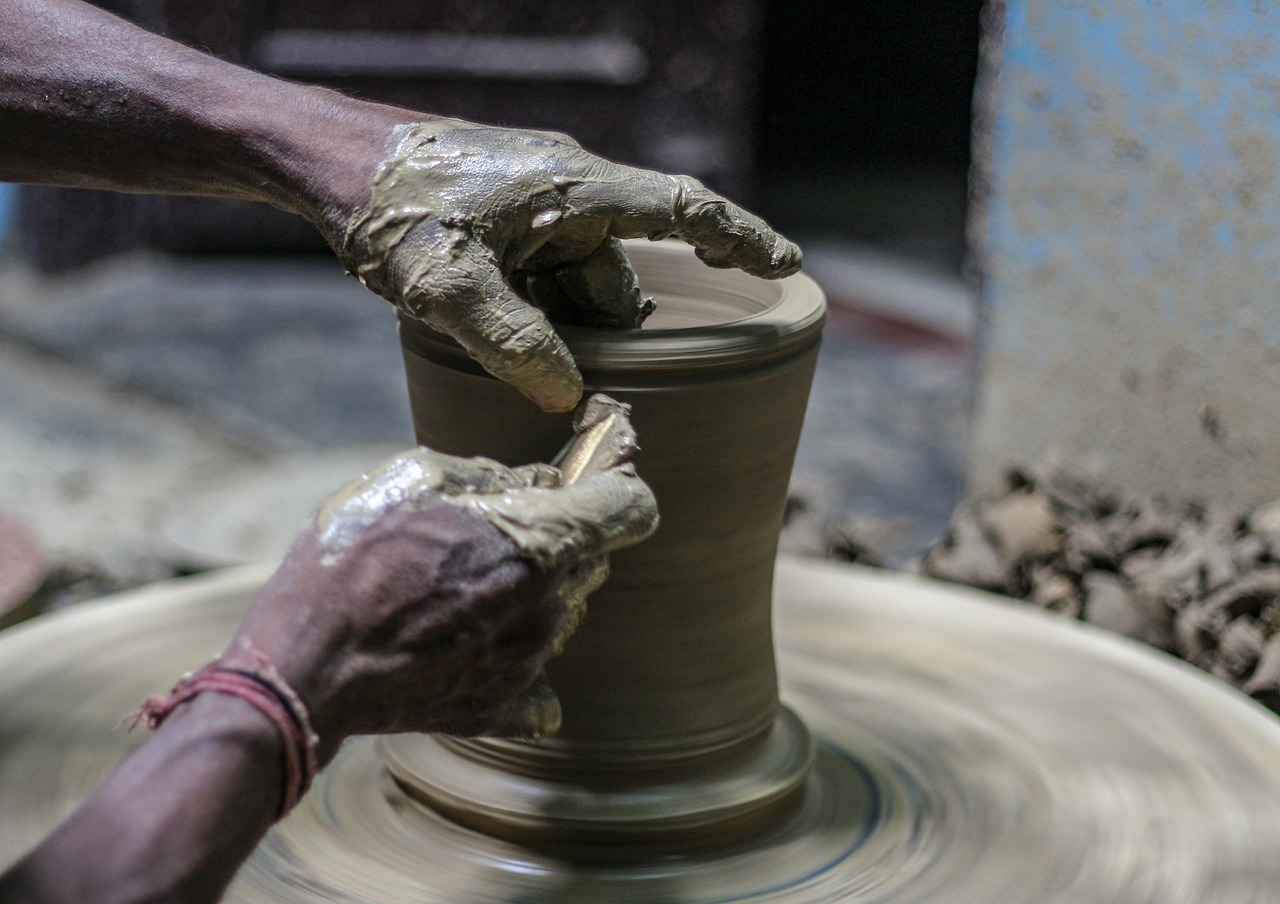
Seeking Feedback
Feedback is like the secret sauce that can elevate your drawing skills from ordinary to extraordinary. Have you ever wondered why some artists seem to improve at lightning speed? One of the key ingredients in their success is the ability to seek out and embrace constructive criticism. It's not just about showing your work to friends and family; it's about engaging with peers, mentors, and even online communities that can provide valuable insights. So, how do you go about seeking feedback effectively?
First off, it's essential to approach feedback with an open mind. Remember, feedback is not a personal attack; it's a tool for growth. When you share your work, consider asking specific questions that can guide the critique. For instance, you might ask:
- What do you think about my use of color?
- Are the proportions accurate?
- Does the composition draw your eye effectively?
By being specific, you not only make it easier for others to help you but also gain insights that are directly applicable to your work. It's like asking a coach for tips on your swing rather than just saying, "How did I do?"
Another great way to seek feedback is to participate in art groups or online forums. Websites like DeviantArt, ArtStation, or even social media platforms can be fantastic places to share your work and receive critiques. Just remember to return the favor; providing feedback to others can also enhance your understanding of art principles and techniques.
Moreover, don't shy away from professional critiques. If you're serious about honing your skills, consider attending workshops or classes where instructors can offer expert advice. They can point out things you might overlook and provide a fresh perspective on your work. Think of it as having a personal trainer for your artistic journey—someone who can push you to achieve your best.
Lastly, it's crucial to reflect on the feedback you receive. Not every piece of criticism will resonate with you, and that's okay. Take the time to consider what aligns with your artistic vision and what doesn’t. This reflection is where the magic happens; it’s how you turn feedback into actionable steps for improvement. So, the next time you finish a piece, remember that seeking feedback is not just about validation. It's about opening doors to new possibilities and pushing your creative boundaries.
Q: How do I handle negative feedback?
A: Negative feedback can sting, but it's essential to view it as an opportunity for growth. Take a step back, breathe, and analyze the critique objectively. If it resonates with your goals, consider how you can apply it to your work.
Q: Where can I find art communities for feedback?
A: There are numerous online platforms such as Reddit, DeviantArt, and social media groups dedicated to artists. Local art clubs or workshops can also be a great way to connect with fellow artists.
Q: How often should I seek feedback?
A: It’s beneficial to seek feedback regularly, especially after completing a new piece. However, don’t overwhelm yourself; aim for a balance where you can digest the feedback and apply it effectively.
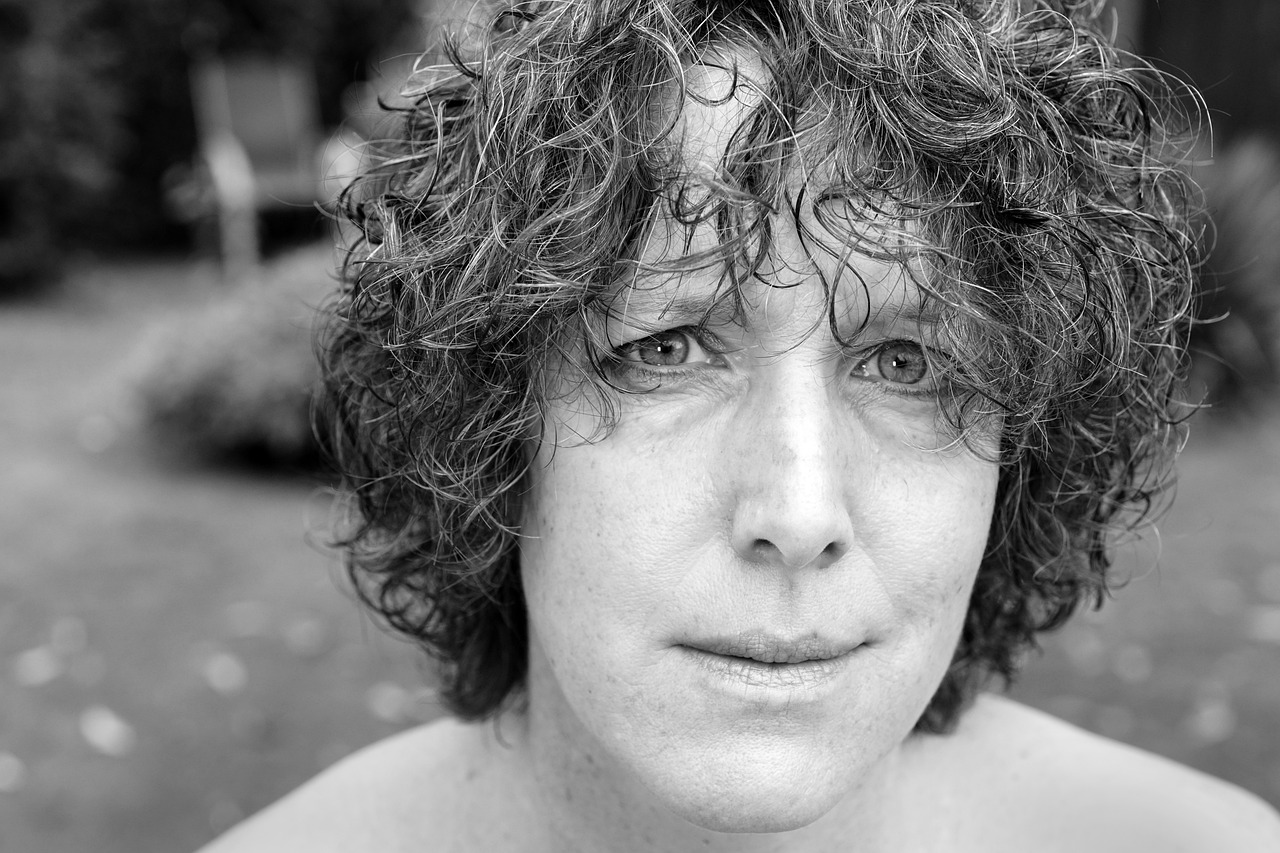
Building a Personal Style
Every artist dreams of developing a unique personal style that sets them apart from the crowd. But how do you even begin to carve out that artistic identity? It’s a journey, not a race, and it often involves a mix of experimentation, self-reflection, and a sprinkle of inspiration from others. Think of your style as your artistic fingerprint—no one else has it, and it’s a reflection of who you are as a creator.
To start building your personal style, consider the following steps:
- Experiment with Different Techniques: Try out various drawing techniques and mediums. Whether it’s watercolor, charcoal, or even digital art, each medium can evoke different feelings and styles.
- Study Other Artists: Look at the work of artists you admire. What elements resonate with you? Is it their use of color, their line work, or perhaps their subject matter? This doesn’t mean you should copy them, but rather understand what draws you in.
- Reflect on Your Interests: What themes or subjects are you passionate about? Whether it’s nature, urban landscapes, or abstract concepts, letting your interests guide your work can help shape your style.
As you explore these avenues, keep in mind that your style will naturally evolve over time. Just like a tree grows and changes with the seasons, so will your artistic voice. Embrace the growth and change—it’s all part of the artistic process!
Another important aspect of building your personal style is to practice regularly. The more you draw, the more you’ll discover what feels authentic to you. Set aside time each week to create without the pressure of perfection. This is your space to explore, make mistakes, and learn. You might find that some of your best ideas come from the unexpected outcomes of your experiments.
Don’t forget to document your progress. Keep a sketchbook or an online portfolio where you can track your artistic journey. Looking back at your older works can provide insight into how your style has developed and where you might want to go next.
Lastly, remember that building a personal style is about self-discovery. Allow yourself to be vulnerable and express your thoughts and feelings through your art. The more genuine you are, the more your style will resonate with others. So, go ahead—let your creativity flow, and don’t be afraid to let your personality shine through your work!
- How long does it take to develop a personal style?
There’s no set timeline! Some artists find their style quickly, while others may take years. The key is to keep experimenting and creating.
- Can my personal style change over time?
Absolutely! Many artists evolve their styles as they grow and learn. Embrace the change as part of your artistic journey.
- Is it okay to be inspired by other artists?
Yes, inspiration is a natural part of the creative process. Just ensure that you’re not copying their work, but rather using it as a springboard for your own ideas.

Setting Goals
When it comes to improving your drawing skills, is like having a roadmap for your artistic journey. Without a clear direction, it’s easy to wander aimlessly, feeling frustrated and stuck. But with well-defined objectives, you can navigate your way through the vast landscape of creativity, making steady progress along the way. So, how do you go about setting these goals?
First, consider breaking your aspirations down into short-term and long-term goals. Short-term goals could be as simple as dedicating 30 minutes each day to sketching or completing a specific drawing by the end of the week. These smaller, manageable tasks help build momentum and provide a sense of accomplishment. On the other hand, long-term goals might include mastering a particular technique, creating a portfolio, or even preparing for an art exhibition. Just like climbing a mountain, you need to tackle it one step at a time!
To make your goals even more effective, consider the SMART criteria: Specific, Measurable, Achievable, Relevant, and Time-bound. Let’s break that down:
- Specific: Clearly define what you want to achieve. Instead of saying "I want to get better at drawing," try "I want to improve my shading techniques."
- Measurable: Determine how you will measure your progress. For example, "I will complete one shading exercise each week."
- Achievable: Set realistic goals. If you’re just starting, don’t aim to create a masterpiece right away. Start small!
- Relevant: Ensure your goals align with your larger artistic aspirations. If your dream is to illustrate children’s books, focus on developing your character design skills.
- Time-bound: Give yourself a deadline to create urgency. "I will finish my character design sketches by the end of the month."
Another important aspect of goal-setting is to regularly review and adjust your objectives. Life happens, and sometimes you might find that your initial goals no longer resonate with you or that you’ve outgrown them. Don’t hesitate to tweak your goals as you evolve as an artist. This flexibility allows you to stay motivated and engaged, preventing burnout.
Finally, celebrate your achievements, no matter how small! Each completed goal is a stepping stone on your path to becoming a better artist. Whether it’s treating yourself to a new sketchbook or sharing your work with friends, acknowledging your progress keeps the creative fire alive.
Q: How often should I set new goals?
A: It’s beneficial to review and set new goals every few months, or whenever you feel you’ve accomplished your current ones. This keeps your artistic journey dynamic and engaging.
Q: What if I fail to meet my goals?
A: It’s perfectly normal to face setbacks. Use them as learning experiences rather than failures. Reassess your goals and adjust them if necessary.
Q: Can I share my goals with others?
A: Absolutely! Sharing your goals with friends or fellow artists can provide accountability and support, making the journey more enjoyable.
Frequently Asked Questions
-
What are the fundamental concepts I should focus on as a beginner?
As a beginner, it's essential to grasp the basics of lines, shapes, and forms. These elements are the building blocks of drawing. Start by practicing simple shapes and gradually move on to more complex forms. Understanding these fundamentals will give you a solid foundation to build upon as you progress in your drawing skills.
-
How often should I practice drawing to see improvement?
Consistency is key! Aim to practice drawing at least a few times a week. Even short sessions can be effective, so try to set aside 30 minutes a day if possible. The more you draw, the more comfortable you'll become with your technique and the quicker you'll notice improvements in your skills.
-
What different mediums should I try for drawing?
Experimenting with various mediums can really enhance your artistic range. Consider trying pencils, charcoal, ink, and even digital tools. Each medium has its unique qualities and can help you express your creativity in different ways. Don't be afraid to mix and match!
-
Why is studying anatomy important for artists?
Understanding human and animal anatomy is crucial for creating realistic representations. It helps you grasp proportions and muscle structures, allowing you to depict figures more accurately. This knowledge can elevate your artwork from basic sketches to lifelike drawings.
-
How can I master perspective in my drawings?
Mastering perspective is all about practice and understanding the principles of one-point and two-point perspective. Start by drawing simple boxes or structures to get a feel for how objects recede into space. Once you grasp these concepts, you can create more dynamic and engaging compositions.
-
What are reference images, and how can they help?
Reference images are photos or real-life objects that you can use as guides for your artwork. They help improve accuracy and can inspire your creativity. When using reference images, pay attention to details like lighting, shadows, and proportions to enhance your drawings.
-
How can I seek feedback on my artwork?
Constructive criticism is vital for artistic growth. Share your work with peers, mentors, or online communities to get feedback. Be open to suggestions and use them to refine your skills. Remember, every piece of feedback is a stepping stone to becoming a better artist!
-
What does it mean to build a personal style in art?
Building a personal style means developing a unique artistic voice that reflects your individuality. Experiment with different techniques, subjects, and mediums until you find what resonates with you. Your style will evolve over time, so embrace the journey of self-discovery!
-
How do I set achievable goals for my drawing practice?
Setting clear and achievable goals is essential for staying motivated. Break your objectives into short-term and long-term goals, such as completing a specific drawing each week or mastering a particular technique. This approach helps you track your progress and keeps you focused on your artistic journey.



















